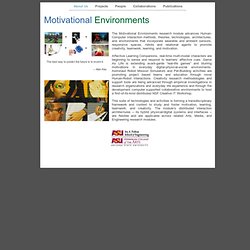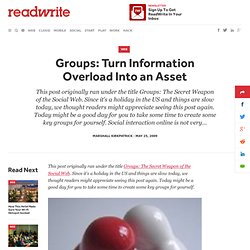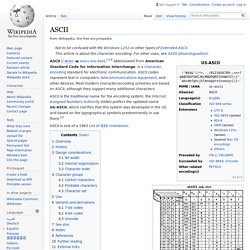

Entrevista a Manuel Castells: “Obama no se entiende sin la Red” « Sociología Contemporánea. Foto: Manuel Castells, la semana pasada en Madrid (24-11-2009) por Santi Burgos para Ediciones El País, SL.

P: Quiero preguntarte por la soledad. Leyendo tu libro hay momentos en que he pensado en esto. De pronto hay un nuevo instrumento que se parece a la radio en su ubicuidad. La radio fue el gran elemento que atenuó la soledad de la gente, ¿internet ha venido a curarla? R. Analizamos los que tenían internet y los que no tenían internet. Internet, contra lo que siempre se había dicho en los medios de comunicación, no es un instrumento que deja sola a la gente con su ordenador, si no que, al contrario, es cumulativo. P: ¿Y el abuso no hace que la gente crea que la vida está allí y no en la calle?
La gente que utiliza internet tiene más amigos, sale más frecuentemente, participa más políticamente, tiene mayores intereses y actividades culturalesR: Justamente los datos muestran que cuanto más sociable, más internet; cuanto más internet más sociable. Berkman Center. Motivational Environments. The Motivational Environments research module advances Human-Computer Interaction methods, theories, technologies, architectures, and environments that incorporate wearable and ambient sensors, responsive spaces, robots and relational agents to promote creativity, teamwork, learning, and motivation.

Affective Learning Companions, real-time multi-modal characters are beginning to sense and respond to learners’ affective cues. Game As Life is extending avant-garde “real-life games” and blurring motivations in everyday digital-physical-social environments. Astronaut Robot Mission Simulators and Pet-Building activities are promoting project based teams and education through novel Human-Robot Interactions.
This suite of technologies and activities is forming a transdisciplinary framework and context to study and foster motivation, learning, teamwork, and creativity. Groups: Turn Information Overload Into an Asset. This post originally ran under the title Groups: The Secret Weapon of the Social Web.

Since it's a holiday in the US and things are slow today, we thought readers might appreciate seeing this post again. Today might be a good day for you to take some time to create some key groups for yourself. Social interaction online is not very sophisticated. The news feed model of conversation has taken over the social web, from Facebook to Twitter to FriendFeed to MySpace, but by itself it doesn't serve us very well. That's where the creation of groups of sources comes in. Various services have different ways for users to separate their "friends" into different groups, viewable by topic, category or type of connection. First we'll discuss four ways that small groups separated from a full river of news can help you use the social web more effectively. Forgive me if this is all obvious to you; I know it's not to everyone.
The Value of Groups Prioritization Context Intimacy. Marketing & Innovation. Télétravail – Quoi ?

Combien ? Où ? Et la polémique Notre partenaire Zevillage nous a alertés récemment sur une contestation des chiffres du télétravail, un sujet que nous suivons régulièrement du fait de notre intérêt pour le sujet depuis de nombreuses années. Le télétravail recouvre une réalité du terrain non uniforme (tous les métiers ne sont pas touchés de la même manière, voire certains ne sont pas touchés du tout. “Depuis 2012, le code du travail définit précisément le télétravail: un travail qui « aurait également pu être exécuté dans les locaux de l’employeur », mais effectué « hors de ces locaux de façon régulière et volontaire » et encadré par un avenant au contrat de travail.
Le télétravail c’est la santé L’important est que ce message ne soit pas brouillé par des explications nuancées ou alambiquées. Beaucoup de ses concepts sont intéressants et ont le mérite d’être clairs. Il n’y a pas UN télétravail. ASCII. ASCII (/ˈæski/ ( listen) ASS-kee),[1]:6 abbreviated from American Standard Code for Information Interchange, is a character encoding standard for electronic communication.

ASCII codes represent text in computers, telecommunications equipment, and other devices. Most modern character-encoding schemes are based on ASCII, although they support many additional characters. ASCII is the traditional name for the encoding system; the Internet Assigned Numbers Authority (IANA) prefers the updated name US-ASCII, which clarifies that this system was developed in the US and based on the typographical symbols predominantly in use there.[2] ASCII is one of a 1963 List of IEEE milestones. ASCII chart from an earlier-than 1972 printer manual (b1 is the least significant bit.)
Overview[edit] ASCII was developed from telegraph code. For example, lowercase i would be represented in the ASCII encoding by binary 1101001 = hexadecimal 69 (i is the ninth letter) = decimal 105. History[edit] Bit width[edit] Sociétés de l'information : comprendre la dynamique des réseaux. HoaxBuster - Premiere ressource francophone sur les hoax.